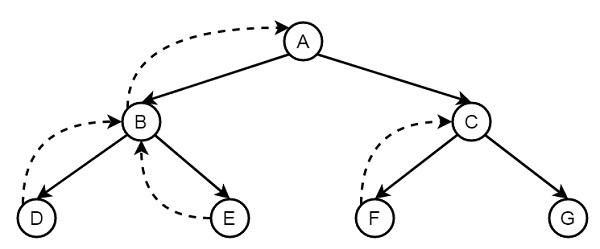Backtracking meaning in DSA
Last Updated :
21 Feb, 2023
Backtracking can be defined as a general algorithmic technique that considers searching every possible combination in order to solve a computational problem.
Backtracking simple structure is shown like the following:

Structure of Backtracking
Properties of Backtracking:
- Incremental construction: Backtracking builds a solution incrementally by constructing a partial solution and expanding it until a complete solution is found or it becomes clear that no solution exists.
- Reversibility: Backtracking is reversible, as it can backtrack to a previous state and try a different path when it reaches a dead end.
- Optimal solution: Backtracking can guarantee an optimal solution if the problem has a well-defined goal and optimal solution, as it explores the entire search space.
- Simplicity: Backtracking is a simple approach for solving problems, as it avoids the need for complex data structures or algorithms and can be easily implemented using a simple recursive approach.
Advantages of Backtracking:
- Flexibility: Backtracking can be used to solve a wide range of problems, from simple puzzles like the N-Queens problem to complex combinatorial optimization problems. It can be adapted to various constraints and problem-specific requirements.
- Pruning: Backtracking can be optimized through pruning, which involves avoiding certain branches of the search tree that are not likely to lead to a solution. This can greatly reduce the search space and speed up the solution time.
- Concurrent execution: Backtracking algorithms can be parallelized and executed in multiple threads, as each recursive call can be executed independently. This can greatly speed up the solution time
Disadvantages of Backtracking:
- Time complexity: Backtracking can be very slow for large problems, as it explores a large search space that may contain many dead ends. This can result in a high time complexity, especially if the problem has a large number of constraints and a complex search space.
- Space complexity: Backtracking can also be memory-intensive, as it requires storing the state of the partial solution at each step of the search. This can result in a high space complexity, especially for problems with a large number of variables and constraints.
- Inefficiency: Backtracking can be inefficient, as it may explore the same parts of the search space multiple times. This can result in a large number of redundant calculations, which can significantly slow down the solution time.
- Limited applicability: Backtracking is not suitable for problems with real-time constraints, as it may take a long time to find a solution. Additionally, it may not be appropriate for problems with continuous variables, as it can only handle discrete variables and constraints.
Application of Backtracking:
Here are five different fields in which backtracking can be used to solve problems:
- Computer Science: Backtracking is commonly used in computer science to solve a wide range of problems, including search algorithms, constraint satisfaction problems, and combinatorial optimization problems.
- Mathematics: Backtracking can be used in mathematics to solve a variety of problems, including those related to graph theory, number theory, and combinatorics.
- Artificial Intelligence: Backtracking is a key technique used in artificial intelligence to solve problems related to planning, decision-making, and optimization. Examples include pathfinding, route planning, and constraint satisfaction problems in robotics and other AI applications.
- Natural Language Processing: Backtracking can be used in natural language processing to solve problems related to parsing and semantic analysis.
What else can you read?
Like Article
Suggest improvement
Share your thoughts in the comments
Please Login to comment...